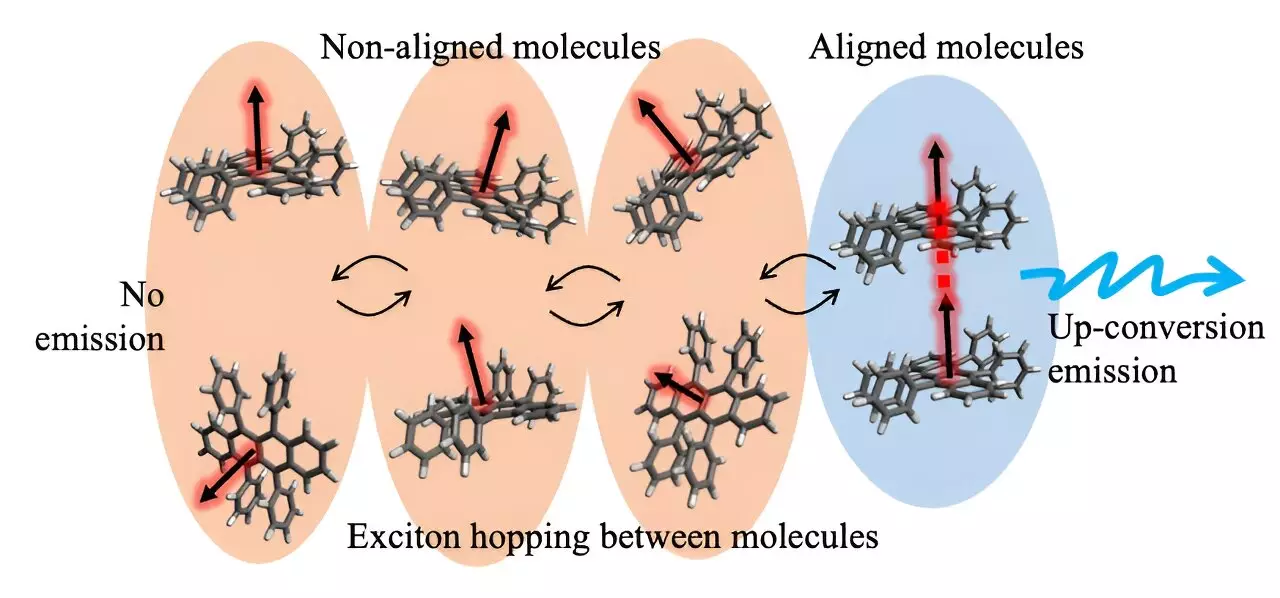In the quest for more efficient PV cells, OLED displays, and anti-cancer therapies, the ability to upcycle two low-energy photons into a high-energy photon is crucial. This process requires the energy to be able to freely move between randomly oriented molecules in a solid. However, the efficiency of this process has been a significant challenge for researchers worldwide.
Kobe University photoscientist Kobori Yasuhiro and his research group have made a groundbreaking discovery in the field of up-conversion. By focusing on the electron spin states of excited states, they were able to identify a key factor that allows two triplet excitons to efficiently combine their energies into a single high-energy photon. This discovery provides a new theoretical model for understanding the up-conversion process.
Through their research, Yasuhiro and his team found that the electron spin states of two triplet excitons must be aligned for efficient energy transfer to occur. This alignment is dependent on the relative orientation of the molecules involved in the process. Additionally, the triplet excitons must have the ability to move between molecules of various orientations at a moderate pace to ensure the interconversion of excited states.
The results of this study offer a new guideline for designing highly efficient photon up-conversion materials based on a deep understanding of the microscopic mechanism involved. This knowledge has the potential to revolutionize the development of solar cells, as well as expand into other fields such as photodynamic cancer therapy and diagnostics using near-infrared light.
The discovery made by Kobori Yasuhiro and his research group at Kobe University sheds light on a previously unclear aspect of the up-conversion process. By focusing on electron spin states and the movement of triplet excitons between molecules, they have provided a valuable insight that could pave the way for the development of more efficient materials in various applications. This breakthrough has the potential to impact not only the field of solar energy but also medical treatments using light-based technologies.


Leave a Reply